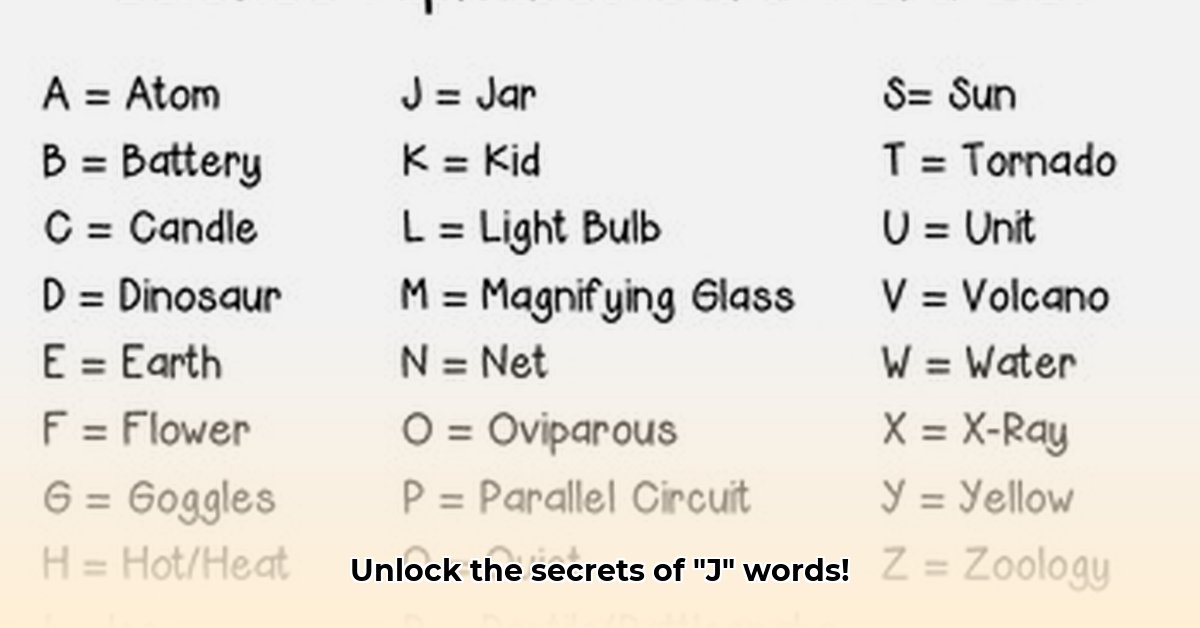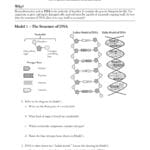Science is a vast and intricate tapestry woven with specialized terminology. Navigating this lexicon can be challenging, especially for those unfamiliar with its unique language. This guide aims to demystify complex scientific concepts starting with the letter “J,” providing clear explanations and illustrative examples to empower students, researchers, and anyone curious about the wonders of the scientific world. For more words starting with “J”, check out this helpful resource: words starting with J.
J-Coupling: Deciphering the Molecular Dialogue
Definition: In the realm of Nuclear Magnetic Resonance (NMR) spectroscopy, J-coupling, also known as spin-spin coupling, describes the intricate magnetic interactions between neighboring atomic nuclei within a molecule. These nuclei, linked through shared electrons, subtly influence each other’s magnetic fields, creating a “molecular dialogue” revealed as split peaks in NMR spectra. This phenomenon is indispensable for determining molecular structures and understanding the spatial relationships between atoms.
Significance: J-coupling provides crucial information about the connectivity and arrangement of atoms within a molecule. By analyzing the patterns of J-coupling in NMR spectra, scientists can decipher the 3D structure of molecules, providing insights into their properties and behavior. This knowledge is fundamental to fields like drug discovery, materials science, and chemical analysis.
Analogy: Imagine two bells ringing in close proximity. The sound waves from each bell interact, creating a combined sound that is different from the individual tones. Similarly, J-coupling represents the interaction of magnetic “tones” from neighboring nuclei, producing a distinct pattern that reveals their relationship.
Jahn-Teller Effect: The Dance of Molecular Distortion
Definition: Visualize a molecule spontaneously distorting its shape to achieve greater stability, much like a dancer finding balance in an intricate pose. This is the essence of the Jahn-Teller effect, a phenomenon where molecules with certain electronic configurations distort their geometry to lower their energy and attain a more stable state.
Impact: This subtle shape-shifting has profound implications for the chemical and physical properties of materials. It influences color, magnetism, and reactivity, playing a critical role in fields like catalysis, materials design, and the study of transition metal complexes.
Example: The vibrant colors of certain gemstones, like amethyst, arise from the Jahn-Teller effect. The distortion of the crystal lattice alters the way light interacts with the material, producing the characteristic purple hue.
Jet Stream: Atmospheric Rivers Shaping Weather Patterns
Definition: High above us, within the Earth’s atmosphere, powerful currents of air race across the globe at remarkable speeds. These are jet streams, fast-flowing, narrow bands of wind that snake their way through the troposphere, significantly influencing weather patterns. They act as atmospheric conveyor belts, transporting warm and cold air masses, dictating the formation and movement of storms, and shaping regional climates.
Influence: The position and strength of jet streams are crucial factors in weather forecasting. Their undulations can bring extreme temperatures, heavy precipitation, or prolonged droughts to different regions. Understanding jet stream dynamics is vital for predicting and mitigating the impacts of severe weather events.
Visual: Imagine a river meandering through a landscape. Jet streams, like these rivers, carve paths through the atmosphere, their twists and turns shaping the weather patterns down below. The stronger the flow, the more pronounced the impact on regional climates.
Joule: Quantifying the Currency of Energy
Definition: The joule is the fundamental unit of energy in the International System of Units (SI). It represents the capacity to do work or produce heat, encompassing everything from the energy stored in a battery to the kinetic energy of a moving object. Named after James Prescott Joule, a pioneering physicist who established the equivalence of mechanical work and heat, the joule provides a universal measure of energy in all its forms.
Applications: The joule is ubiquitous in science and engineering, used to quantify energy consumption, calculate power output, and measure the thermal properties of materials. Its standardization allows for consistent comparisons and precise calculations across diverse disciplines.
Example: The energy required to lift a small apple one meter against Earth’s gravity is approximately one joule. This simple example illustrates the tangible nature of energy and its quantification through this fundamental unit.
Jurassic Period: A Journey to the Age of Giants
Definition: Step back in time to the Jurassic Period, a geologic era spanning from approximately 201 to 145 million years ago. This middle chapter of the Mesozoic Era is renowned as the age of dinosaurs, a time when colossal reptiles roamed the Earth, dominating terrestrial ecosystems.
Significance: The Jurassic Period witnessed a remarkable diversification of life, leaving behind a rich fossil record that continues to inform our understanding of evolutionary history. The iconic dinosaurs of this era, such as Brachiosaurus, Stegosaurus, and Allosaurus, provide glimpses into a lost world, revealing the intricate interplay of life and environment in a prehistoric setting.
Legacy: The Jurassic Period continues to captivate our imagination, inspiring scientific inquiry and fueling our fascination with dinosaurs. The fossils unearthed from this era provide invaluable clues about the evolution of life on our planet and the forces that shaped the world we inhabit today.
Juxtaglomerular Apparatus: The Kidney’s Blood Pressure Sentinel
Definition: Nestled within the kidneys, the juxtaglomerular apparatus (JGA) acts as a crucial regulator of blood pressure and fluid balance. This specialized structure, located where the afferent arteriole enters the glomerulus, monitors blood flow and releases renin, a hormone that initiates a cascade of events ultimately impacting blood pressure.
Function: The JGA acts as a sensor and a regulator, responding to changes in blood pressure and sodium levels. It plays a vital role in maintaining homeostasis, ensuring that the body’s internal environment remains stable despite external fluctuations.
Mechanism: When blood pressure drops, the JGA releases renin, which triggers the renin-angiotensin-aldosterone system (RAAS). This complex hormonal pathway leads to vasoconstriction (narrowing of blood vessels) and increased sodium reabsorption, ultimately raising blood pressure back to normal levels.
The Power of “J”: Unveiling the Interconnectedness of Science
From the subatomic realm to the vast expanse of geologic time, the scientific concepts starting with “J” illustrate the interconnectedness of diverse fields. These terms, each representing a unique piece of the scientific puzzle, contribute to our understanding of the natural world and the intricate processes that govern it. By exploring these concepts, we gain a deeper appreciation for the complexity and wonder of science.
- Guatemala vs. Costa Rica: Plan Your Trip Smartly - April 16, 2025
- Master Types of Pumps: Ultimate Guide to Selection - April 16, 2025
- Unlock Types of Makeup Secrets: Master Any Look Now - April 16, 2025
















